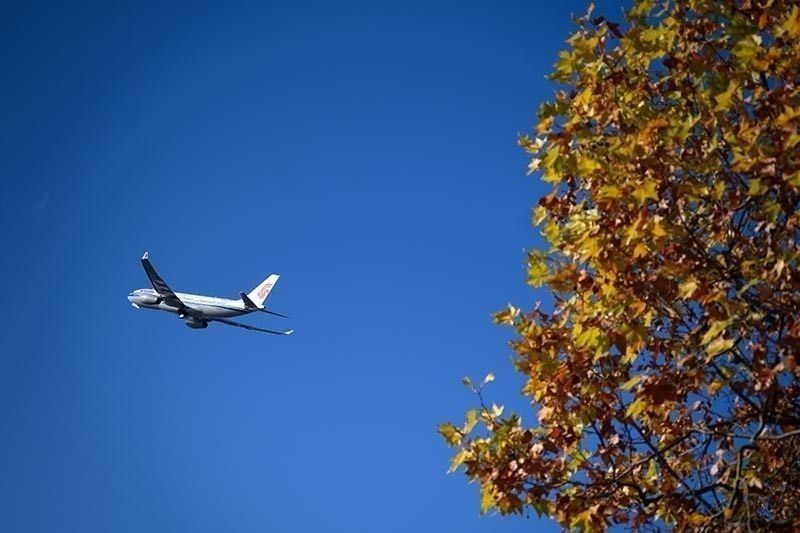Convenience and speed


With the long Undas holiday upon us, most Filipinos are no doubt off on the traditional long-weekend vacation, either opting for a long weekend drive somewhere near the city or for those who can afford it, a quick three to four day getaway abroad.
And what do we as travelers seek when we plan to travel abroad? According to the International Air Transport Association (IATA), the topmost consideration of most travelers is convenience and speed.
In its 2024 Global Passenger Survey, the IATA revealed that travelers continue to prioritize convenience and speed. For a smoother travel experience, travelers are eager to use biometric identification and complete some travel processes before reaching the airport.
While we Filipinos may be eager to have these as well, unfortunately we are still way behind the curve even as we are now more hopeful that with the takeover by the San Miguel-led New NAIA Infra Corp. (NNIC) such facilities will become available so that we can truly experience world-class travel facilities and convenience.
“Passengers want flexibility and transparency when planning and booking travel, plus speed and convenience at the airport. More are embracing biometrics, digital wallets, and off-airport processes to make it happen,” according to Nick Careen, IATA’s senior vice president of operations, safety, and security.
Other findings of the IATA survey showed that up to 68 percent of respondents said proximity to the airport was their top priority when selecting their departure airport, followed by minimizing total travel time (33 percent) and getting the best ticket price (25 percent).
With digitalization, majority of those traveling or 71 percent said they book travel online or via a mobile app, with 53 percent preferring to use the airline’s website / app, and only 16 percent prefer human interaction. A third of respondents or 32 percent said they want to have all travel information consolidated in one place during the pre-travel process.
Majority or 79 percent of travelers prefer to pay for travel with a credit or debit card, followed by digital wallets at 20 percent and instant payment solutions, with convenience as the main reason passengers choose a particular payment method (70 percent), followed by benefits (39 percent) and security (33 percent).
Repeatedly, passengers prioritize convenience in the planning, booking, and payment phase of travel. For this convenience, they may accept some higher costs and they are increasingly willing to use technologies such as digital wallets.
“Technology continues to change the way people plan, book, and pay for travel. Travelers expect the same conveniences when shopping for travel that they get in any other online shopping experience. That means simplicity, clarity, and with options to meet their preferences while keeping their data secure. The industry is stepping up to meet the demand for greater customer centricity through IATA’s Modern Airline Retailing initiative. Passengers will experience its positive impact progressively in the very near future,” said Muhammad Albakri, IATA’s senior vice president for financial settlement and distribution services.
At the airport, the IATA survey revealed, majority or 70 percent of those surveyed said they want to reach their boarding gate in 30 minutes or less when traveling with just a carry-on; 74 percent expect it to take no longer than 45 minutes with a checked bag. Most or 85 percent of travelers said they are willing to share immigration data i.e. passport, visa with authorities before departure to speed up airport process, and 89 percent are interested in a trusted traveler program to expedite security screening.
However, less that half or 45 percent of those surveyed said immigration procedures should be completed before reaching the airport, and 36 percent feel the same about check-in. Additionally, 70 percent of passengers said they’d be more likely to check-in a bag if they could do so in advance. Less than half or 46 percent of travelers experienced airport processes using biometric identification. The highest usage is seen at entry and exit immigration checkpoints (43 percent), with 84 percent satisfied, and 75 percent preferring use of biometrics over traditional passports and boarding passes.
About half of those surveyed said they are concerned about data protection and 39 percent would be more open to biometric solutions if assured of their data’s security.
A new initiative of the IATA called One ID is helping the industry to respond to traveler desires for faster processes and less hassle on the way to their aircraft, securely powered by biometrics and digital identity.
“The clear message from travelers is that they expect to board their planes faster with technology and smarter processes beginning well before they reach the airport. And the good news is that we are making this happen. Already travelers can arrive at the airport ready to fly with admissibility checks completed. And biometrics and digital identity can deliver a paperless experience once at the airport. That’s great for passengers. Importantly, the greater efficiency will help airport infrastructure to better cope with the growth in passenger numbers, helping to make the business case for adopting these new technologies and processes even more compelling,” said Careen.
The IATA survey results also showed that those under 25 are considerably more proactive in using technology to improve their travel, but want assurances on security. About half or 51 percent would choose digital wallets for payment, far above the global average of 20 percent. Interestingly, most or 90 percent of those surveyed expressed interest in using a smartphone with a digital wallet, passport, and loyalty cards for booking, payment, and airport navigation, surpassing the global average of 77 percent, while 48 percent prefer biometrics over traditional passports and boarding passes, compared to 43 percent of those aged 56 to 75.
About half of those under 25 years old would be more open to biometric solutions if assured of data security, versus the global average of 39 percent.
The survey showed that Asia-Pacific travelers are the most price-conscious when choosing their departure airport. They lead in using mobile apps and digital wallets to book and pay for travel, more than any other region. They are also more likely to use biometric technology at airports, although their satisfaction with the experience is the lowest among all regions. Complex visa requirements deter more travelers from Asia-Pacific than most other regions.
European travelers are more likely to book through an airline’s website and pay with a credit or debit card. They tend to be slightly more cautious about using digital solutions and sharing personal information to enhance their travel experience compared to other regions. Europeans are also the least likely to share biometric data to speed up processes, and when they do, their satisfaction is lower than that of travelers from other regions.
North America passengers overwhelmingly, and more than any other region, prefer to pay for their flights with debit or credit cards and are the most frequent users of loyalty points for payment. They actively use biometric identification for airport processes and report high satisfaction with it. Nearly all are interested in providing data in advance for more ‘lighter’ security checks at the airport.
Middle East passengers are the most likely to choose an airport for its facilities and services. A higher percentage book their flights through a channel where human interaction is involved than most other regions. They are enthusiastic about using smartphones to store digital wallets, digital passports, and loyalty cards for booking, payment, and airport navigation. Over half have used biometrics instead of a passport for airport processes in the past 12 months, with nearly all reporting satisfaction with the experience.
Latin America and Caribbean passengers prefer booking travel with a credit or debit card. They place the highest value on payment flexibility, preferring to pay in instalments more than any other region. They are more inclined than any other region to obtain visas from a consulate or embassy. They use biometrics less frequently than other regions; however, they show a strong willingness to adopt the technology and report high satisfaction when they do.
African passengers prioritize convenience when choosing an airport, but often face limited options due to a lack of alternatives. More passengers in this region book their tickets through travel agents than in any other area. They also show a stronger interest in adopting digital solutions and technology to streamline travel processes. Additionally, complex visa requirements are a deterrent for African travelers compared to other regions.
- Latest
- Trending
































